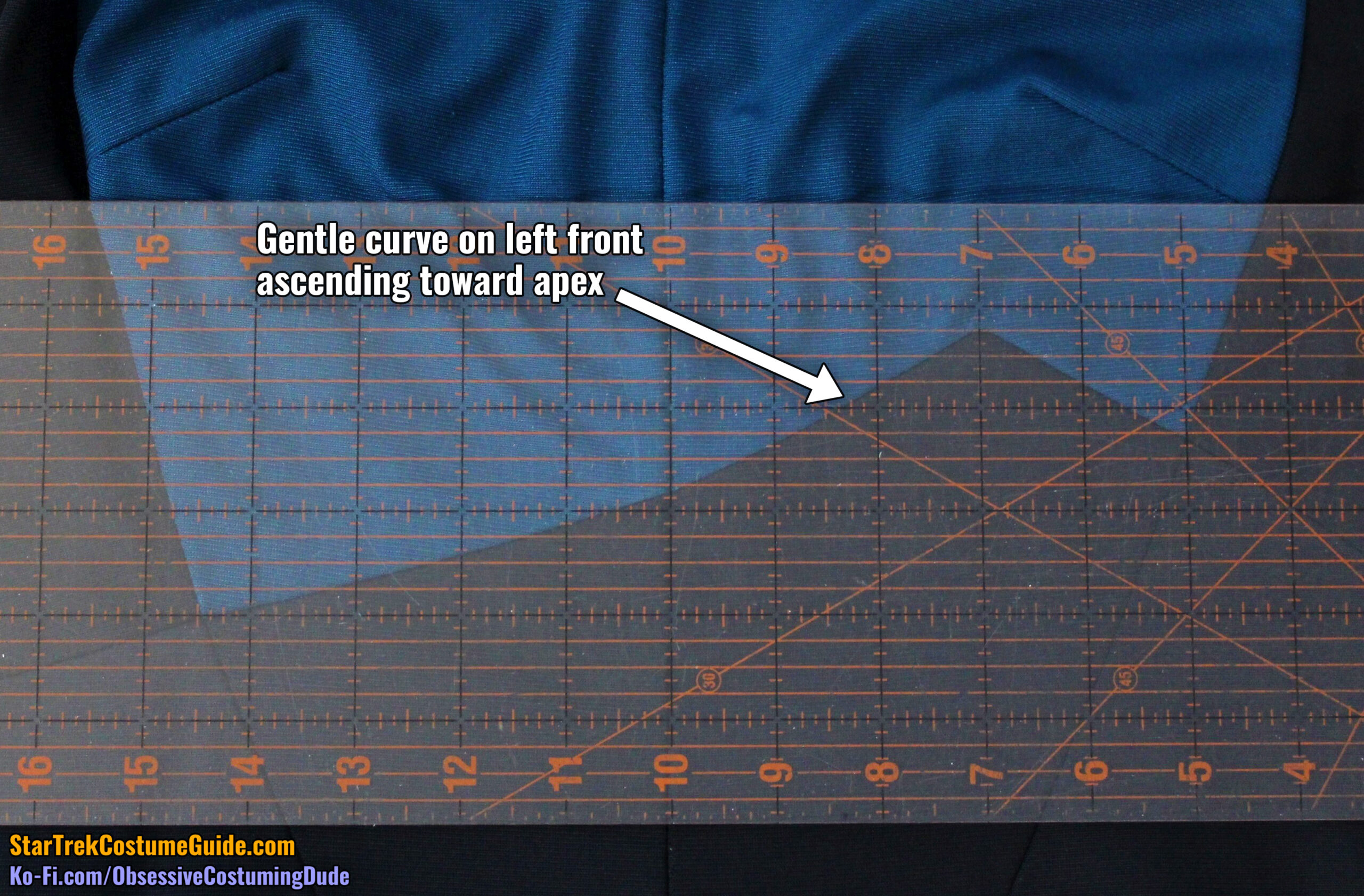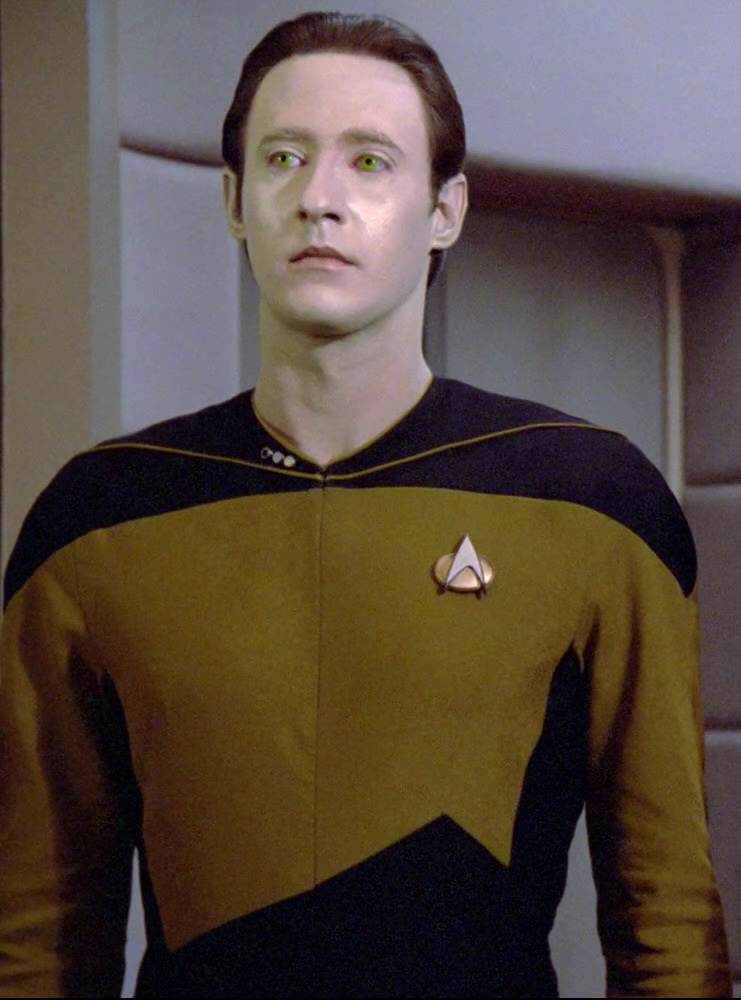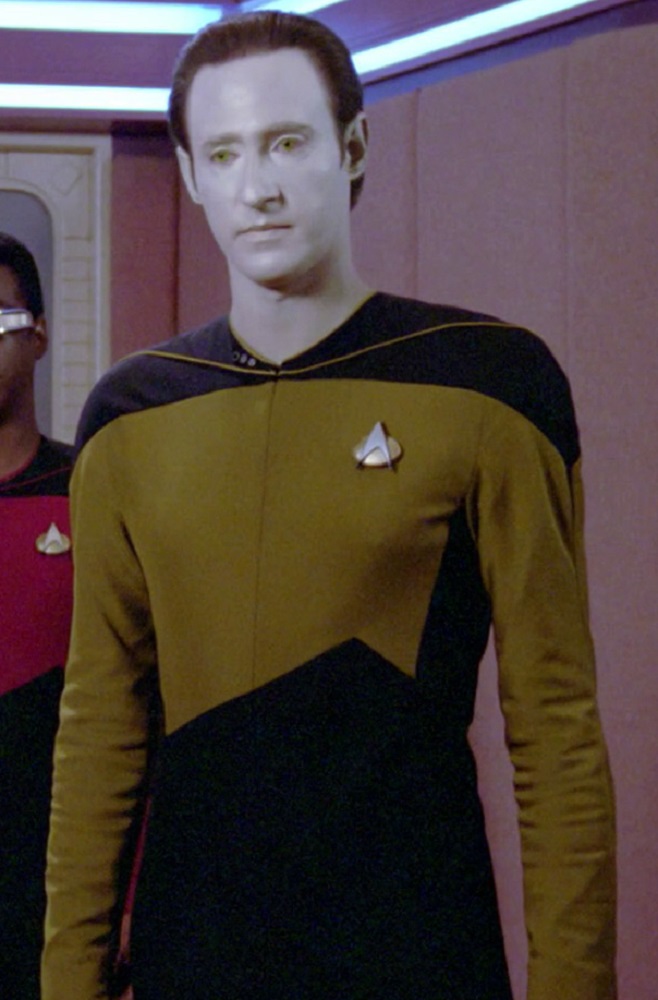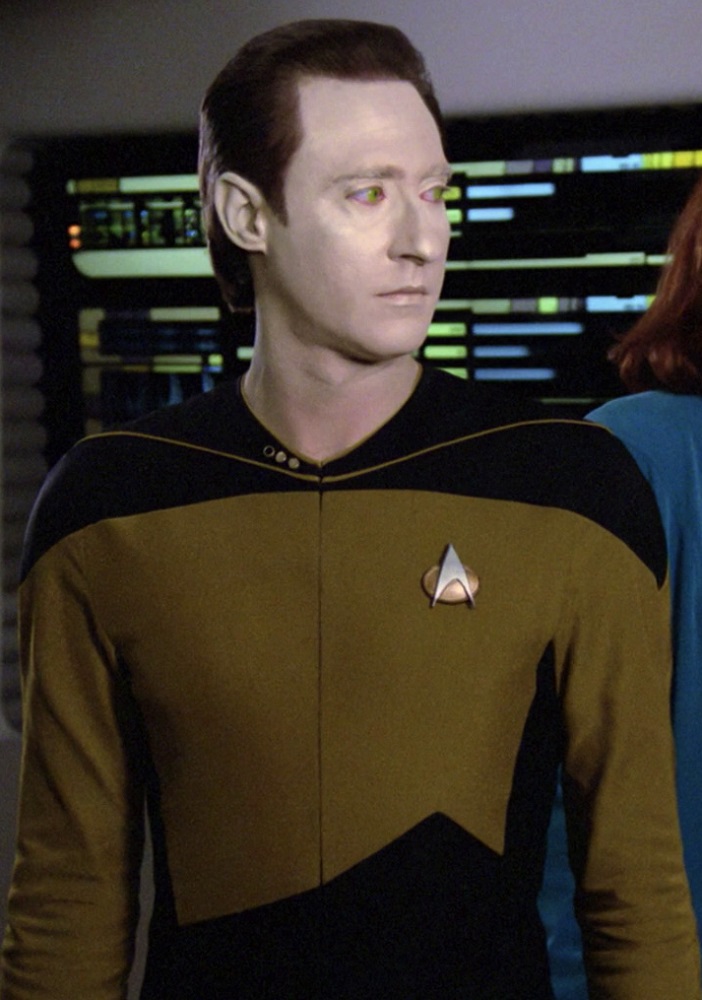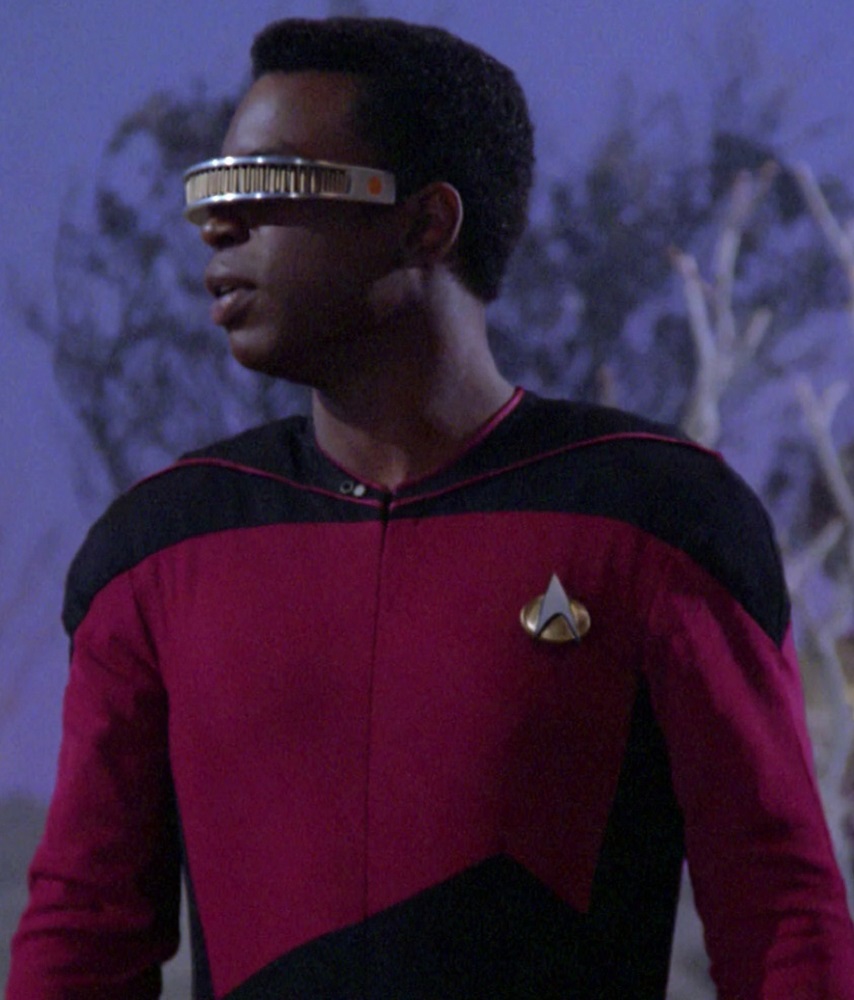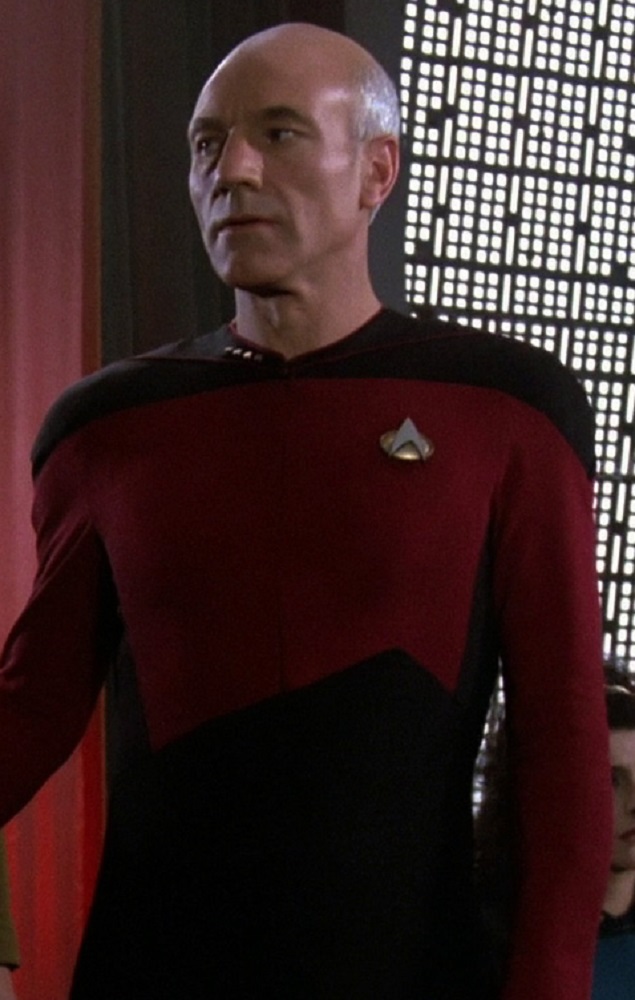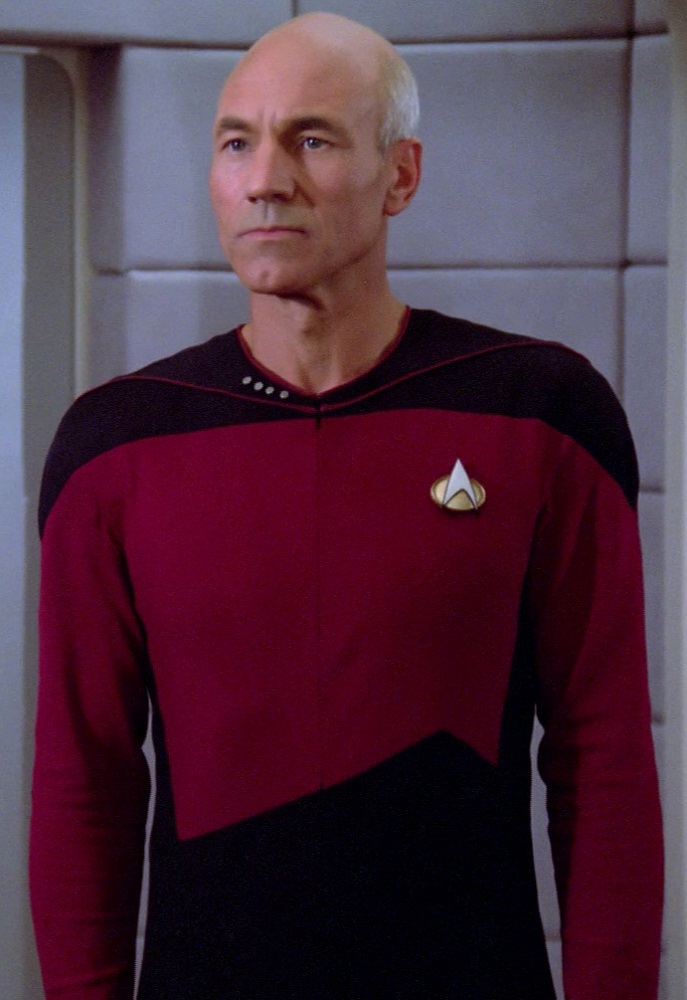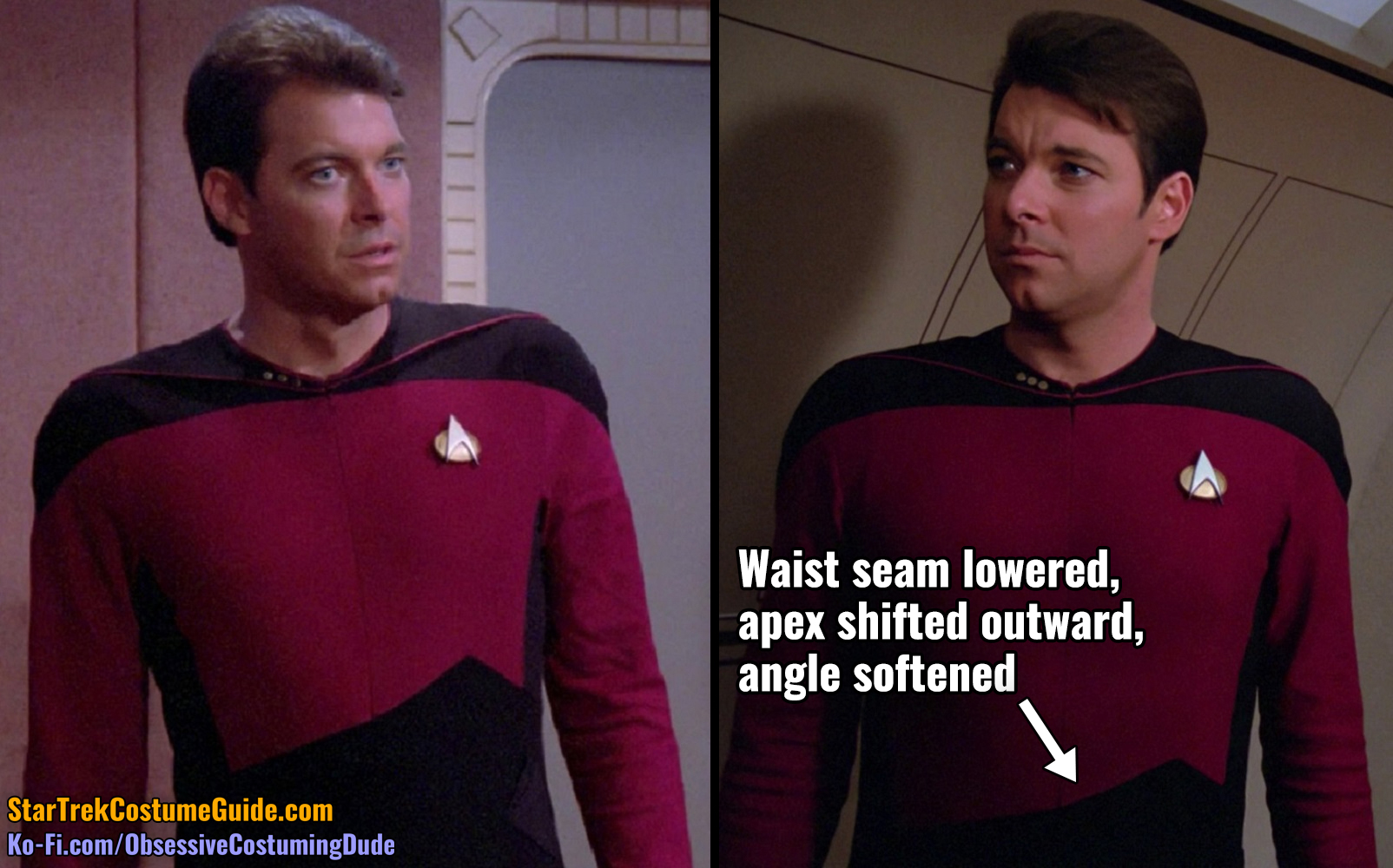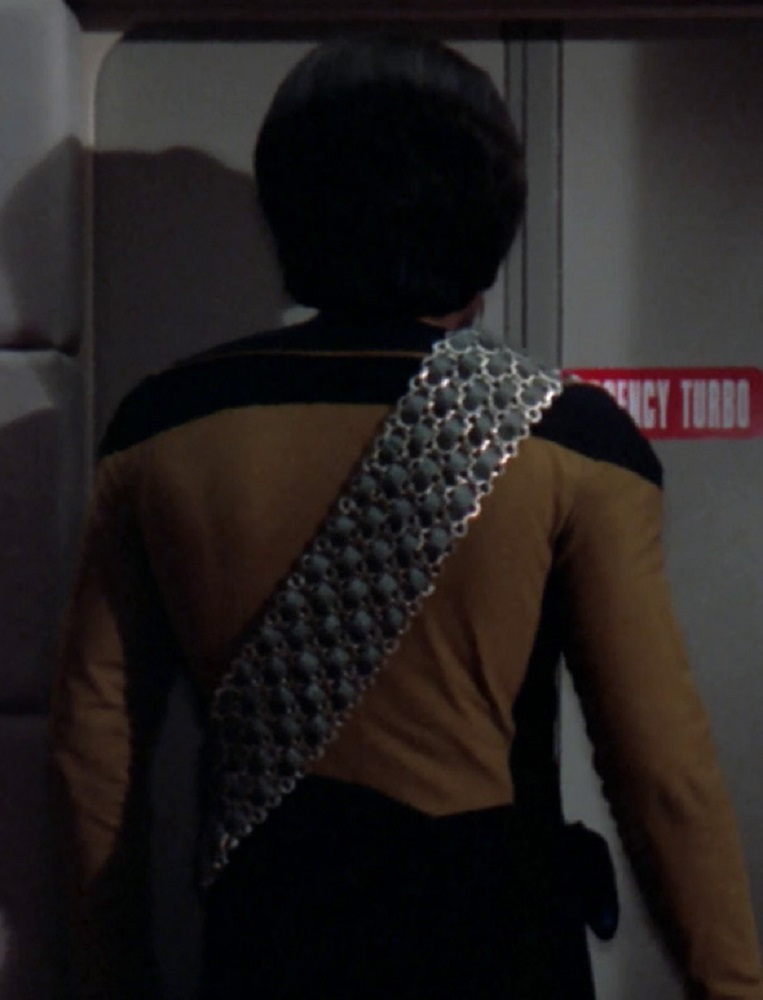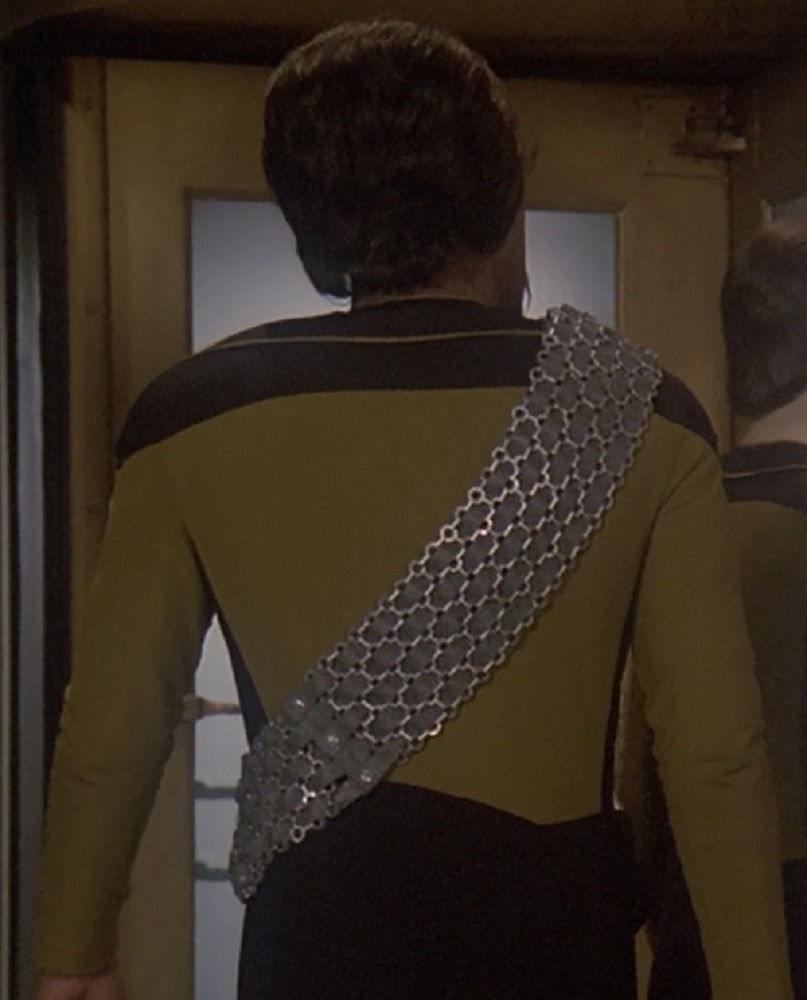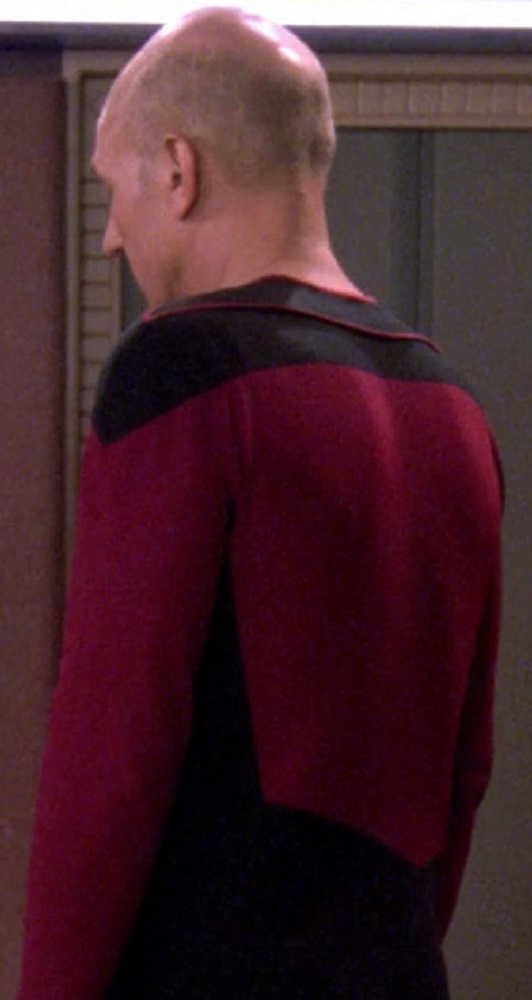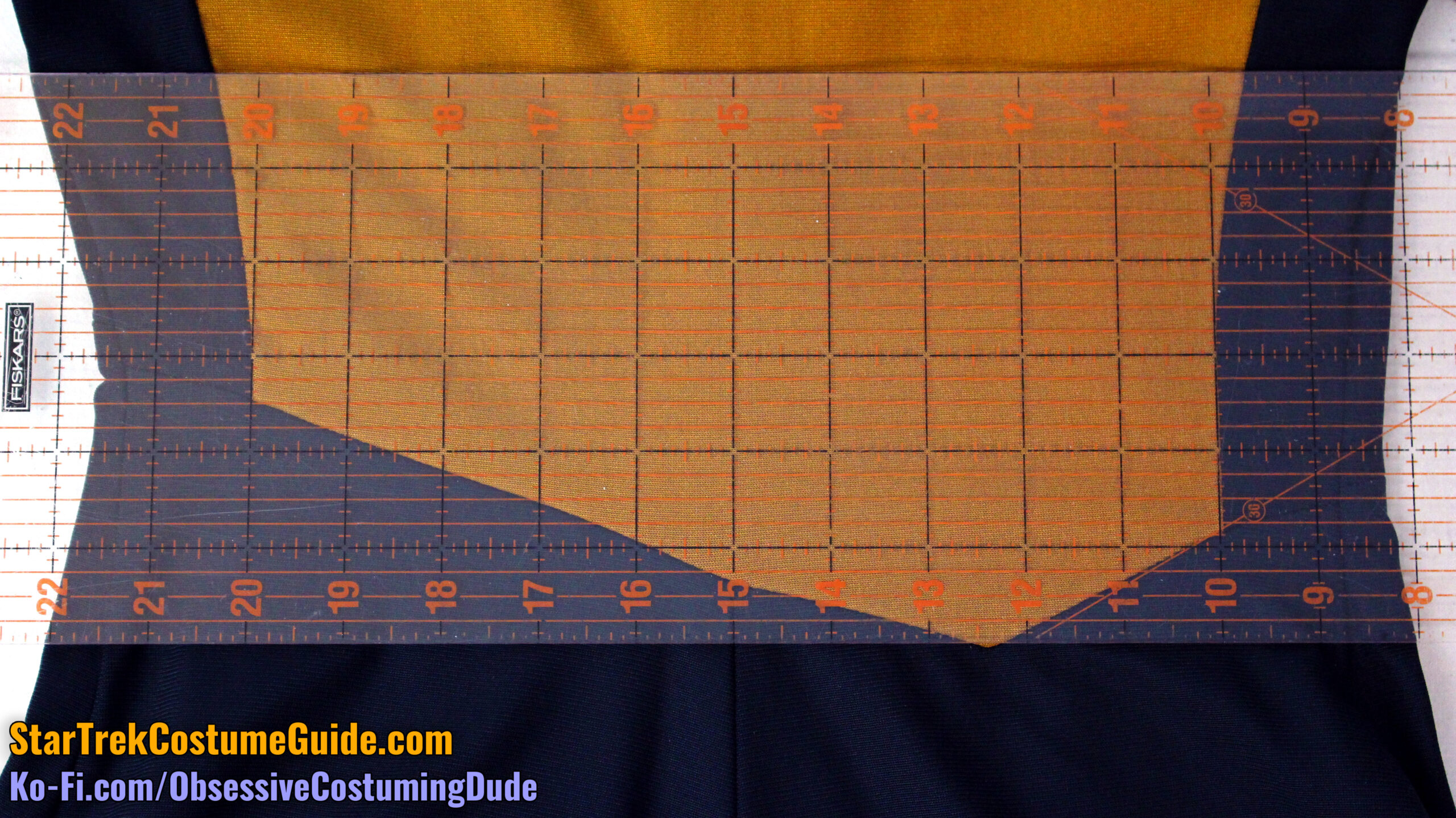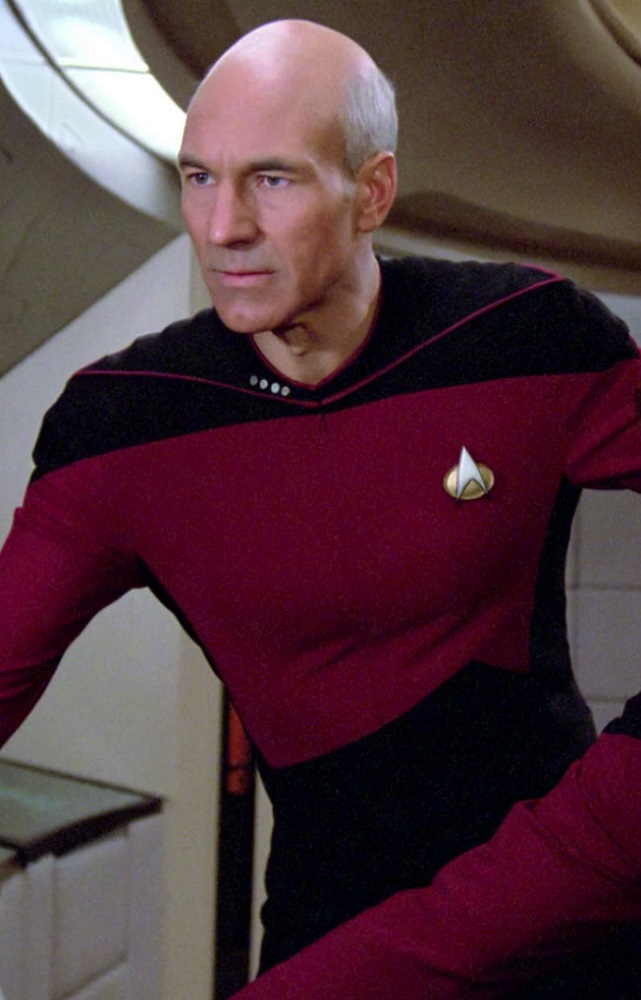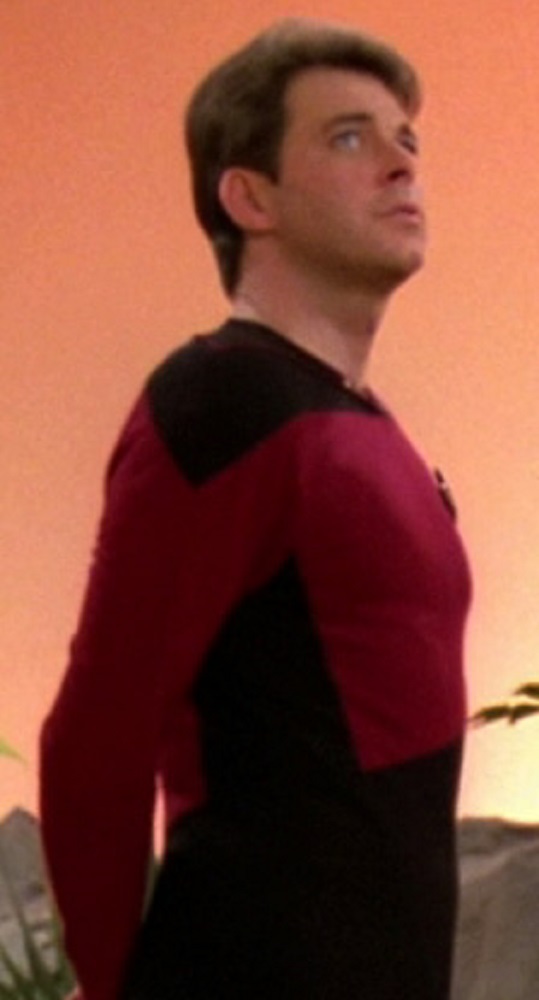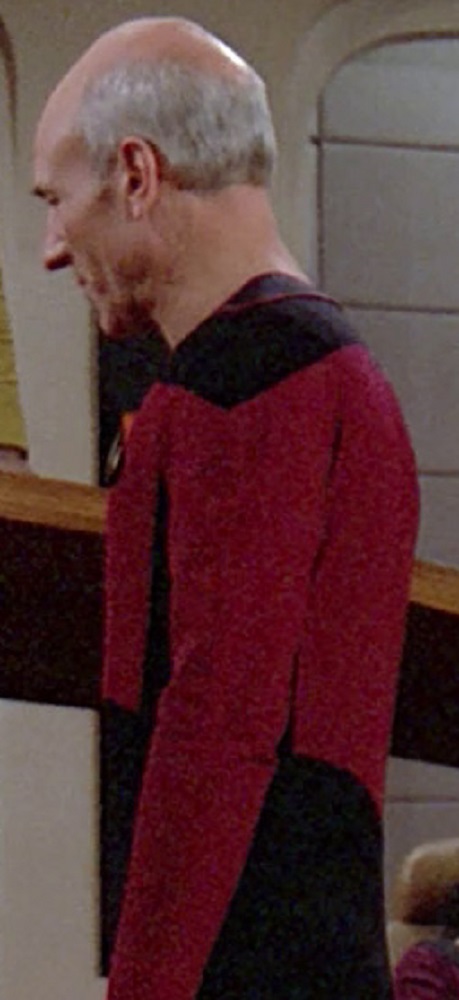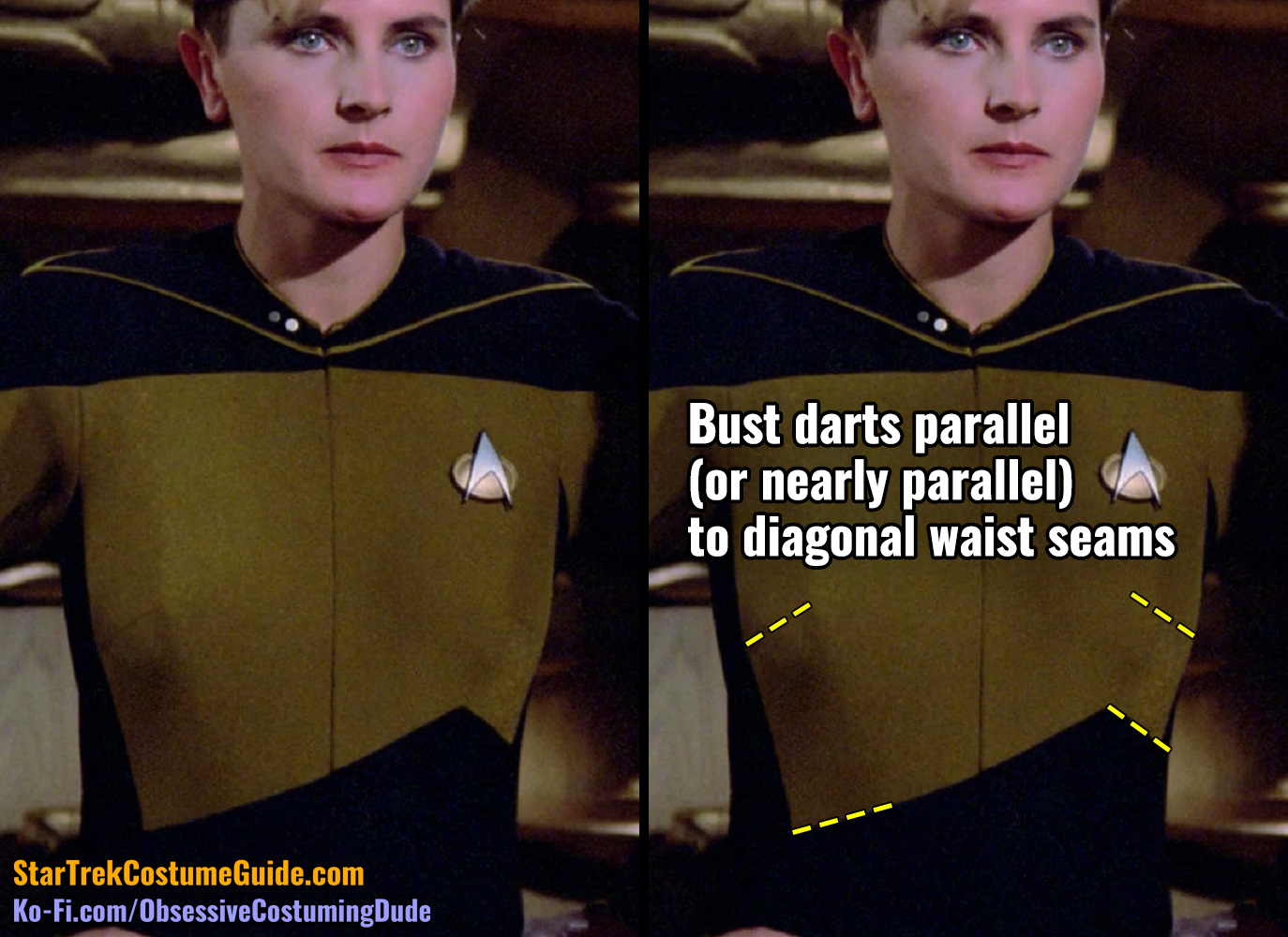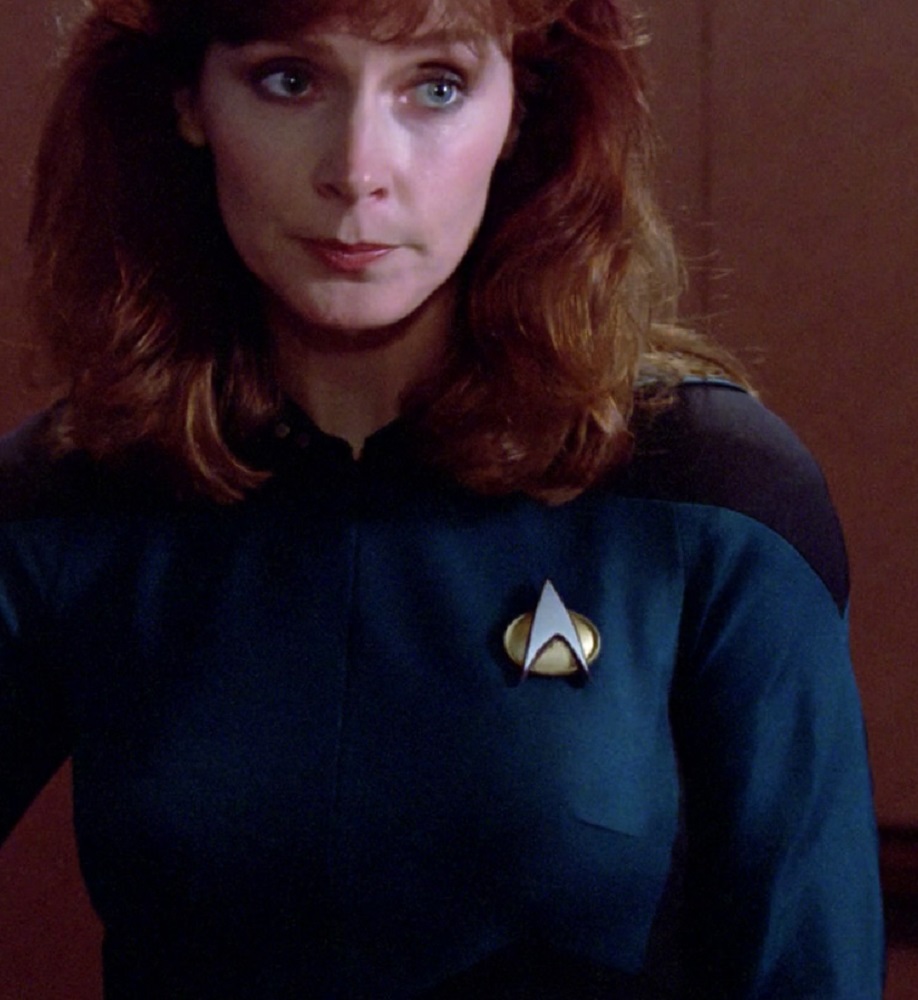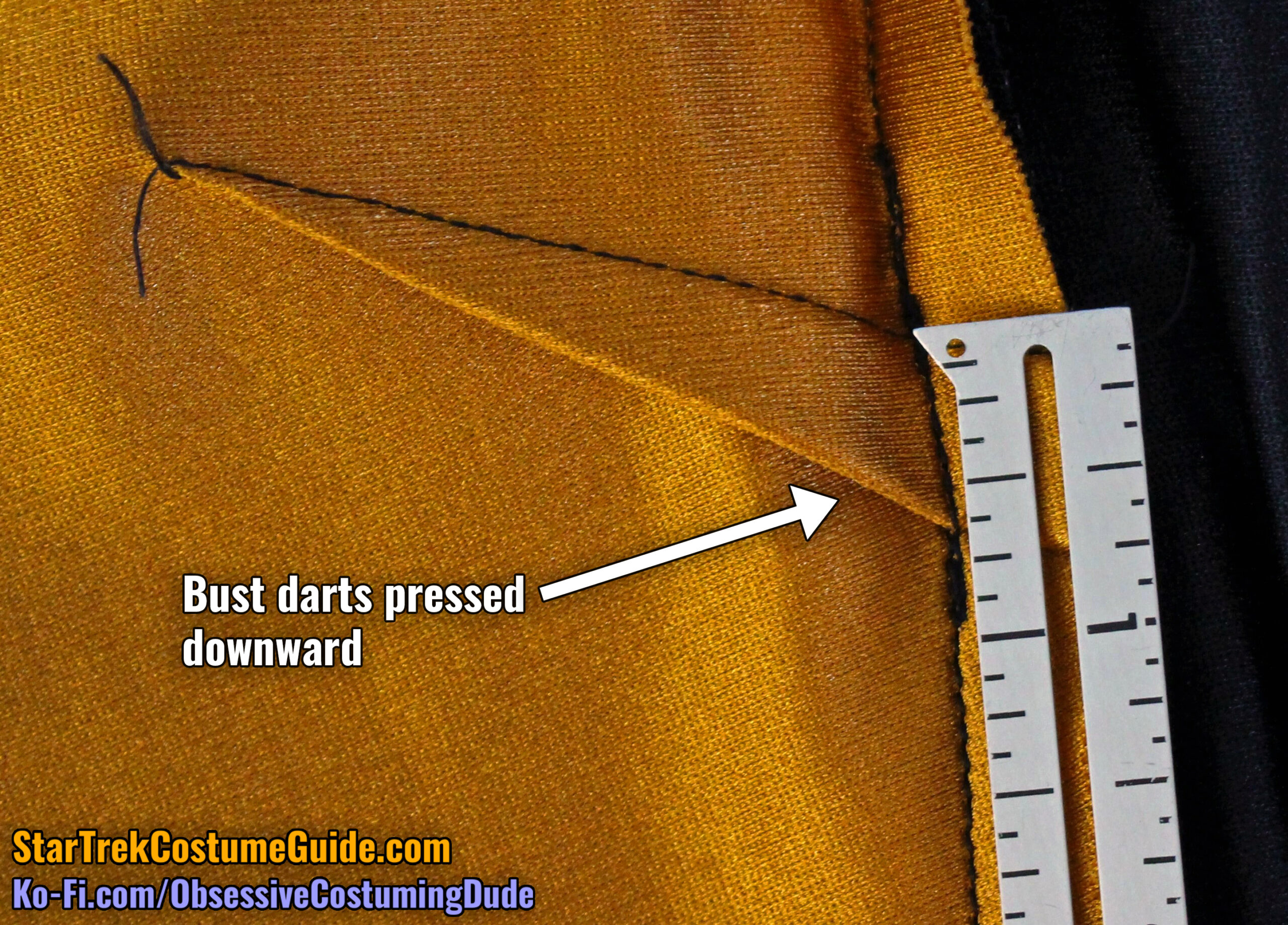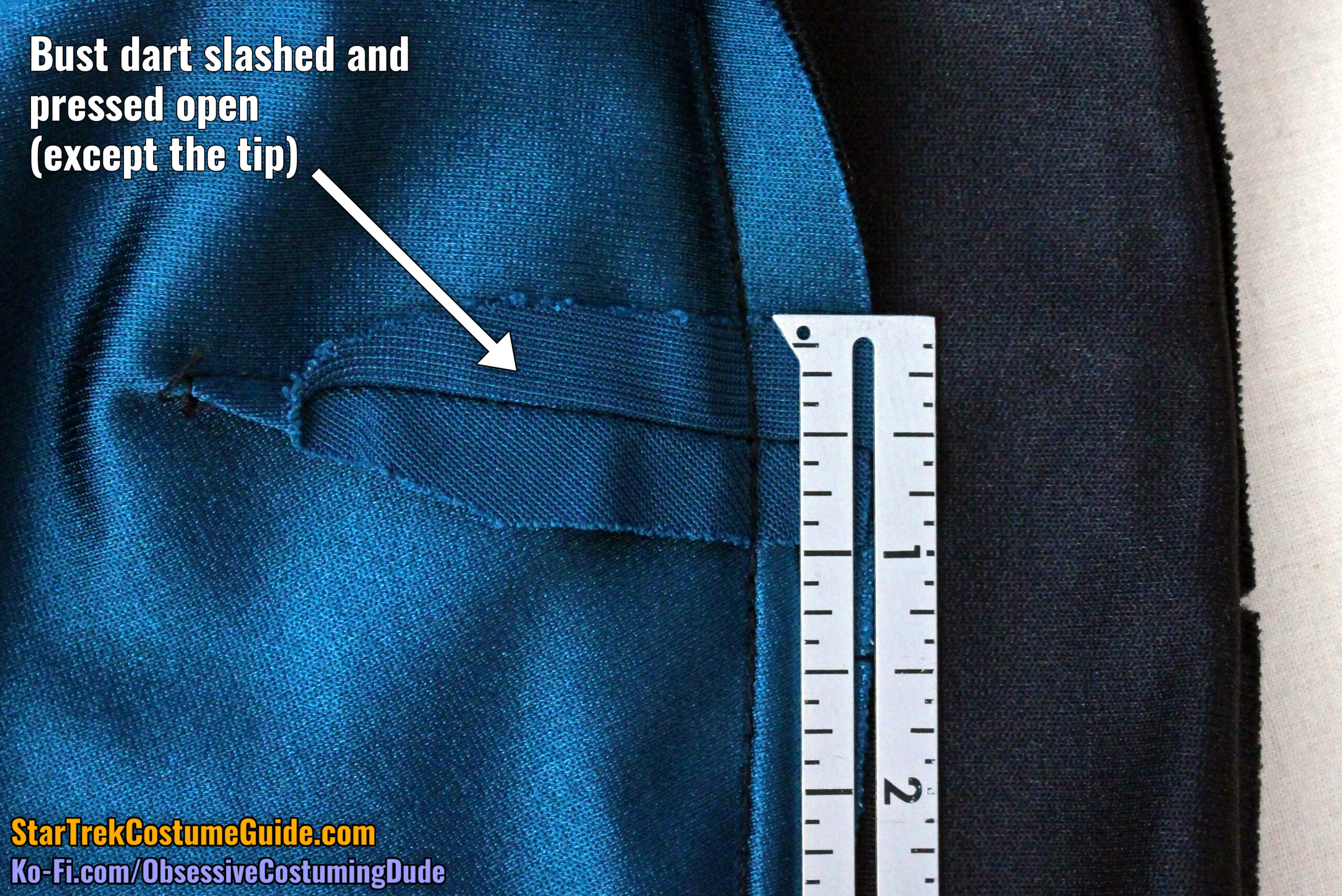Upper Front
Most of the upper torso on the TNG jumpsuits was division-colored, making it very easy to quickly determine the wearer’s division.
But perhaps the most iconic element of William Ware Theiss’ TNG-era uniforms was the asymmetrical front waist paneling, beneath the division-colored torso.
I believe this may have been inspired, at least in part, by the lower portion of the Starfleet “delta” symbol.
On all three of the screen-used early TNG jumpsuits I studied (all from season 1), the apex was horizontally positioned 3/5 (or 60%) across the lower left front, measured horizontally from the lower front left seam intersection to the center front.
And even though these asymmetrical waist seams often appeared to be completely straight, there was actually a slight upward curve on the left toward the apex, giving it a little bit of “flair” toward the upper corner.
This subtle “flair” may have been slightly more pronounced on some uniforms than others; below are two examples of Data’s uniforms, the left one appearing straighter but the right one with a more obvious curve.
This subtle “flair” may have been slightly more pronounced on some uniforms than others; below are two examples of Data’s uniforms, the left one appearing straighter but the right one with a more obvious curve.
Tasha’s uniforms also appear to have been consistent in this regard.
Geordi’s did, as well.
It is this specific style of front paneling/proportions that I will subsequently refer to as the “season 1 front,” although a more accurate term might be “season 1a front.”
It’s tough to say for sure since his baldric covered most of the left front waist area (including the apex), but it looks like Worf’s uniforms had consistent waist styling through the end of the season.
Captain Picard’s asymmetrical waist seam was similarly styled for the first couple episodes:
However, a few episodes into the show, Captain Picard’s asymmetrical waist seam was lowered, the apex shifted outward slightly, and the angle softened.
It was this second style that he wore most often (but not exclusively) for the rest of the first season.
Toward the end of the season, it looks like his waist seam was lowered even more.
Commander Riker’s uniforms were also consistent with the others for the first half or so of the season.
About halfway through the season, though, his uniforms switched to Picard’s (second) style.
Here’s a side-by-side comparison of Commander Riker’s early and later waist seams:
Dr. Crusher’s uniforms were also initially consistent with the others.
At some point partway through the season, though, her asymmetrical waistline was also lowered and softened similarly to Captain Picard’s and Commander Riker’s.
(I wasn’t able to determine exactly when, because her lab coat usually obscured the jumpsuit’s front paneling.)
Here’s a side-by-side comparison of Dr. Crusher’s early and later waist seams:
Q’s uniforms were consistent with the earlier style for both his appearances, as were most of the extras’ uniforms.
Again, it this earlier style of front paneling/proportions that I’ll be referring to as the “season 1 front” later throughout this analysis.
Should I make the distinction between “season 1a front” and “season 1b front,” the latter will be in reference to the altered Picard/Riker/Crusher waist proportions.
Upper Back
The upper back of the TNG jumpsuit was one large panel, without a center back seam.
The back of the TNG jumpsuit also featured an asymmetrical waist, approximately mirrored and inverted from the front (i.e. upside-down and backwards).
Like the front, these asymmetrical back waist seams often looked straight …
However, also like the front, at least some of the uniforms had a slight downward curve toward the lower apex.
The curve was subtle (and often pulled into a straighter line on the wearer), but it was actually visible sometimes in the show.
The gentle downward curve was usually easiest to see when a character was standing at a slight angle away from the camera.
On the two screen-used women’s TNG jumpsuits I studied, the curve was so subtle the seam did almost look straight – partially because it was a gentler curve, but I think also because the shape of the pant legs also pulled the upper back in the opposite direction.
Indeed, the tapered upper center back seam of the pant legs sometimes pulled the upper back body panel so far down as to produce an opposite curve.
That aside, the asymmetrical back waists appear to have been generally consistent across the cast – except for Commander Riker’s, whose seam was (or at least looked) more gently angled than the others’.
To better highlight the overall range of back waist seam angles, here’s a side-by-side comparison between the most-slanted back waist (Geordi’s from season two), Picard’s as a typical example, and Riker’s as the least-slanted.
Side Panels
The entire TNG jumpsuit torso wasn’t division-colored; underneath each arm were black side panels.
These black side panels provided a nice contrast to the rest of the torso, and they also had a slimming effect on the wearer – subtly emphasizing the “heroically” rounded shoulders by color association while simultaneously making the wearer appear more slender around the waist.
From the front, only a sliver of the black side panels was usually visible; their effect was indeed subtle.
From the back, the effect was even more subtle; the black side panels were barely visible at all.
When viewed from the sides, the wearer’s arms almost entirely covered the side panels, almost making them appear to simply be shadows.
The black sides of the jumpsuit were actually comprised of two separate panels (side front and side back), closed with a side seam.
While not always the case (see the screen-used Tasha Yar TNG jumpsuit I studied) I believe these two side panels (front and back) to have ideally been proportionate widths.
(The measuring tape in the photos above is irrelevant to my point about the side panel proportions.)
The side panels weren’t direct extensions of the pant legs; they were joined to the lower body via diagonal seams at the waist.
A particularly nice characteristic of the TNG jumpsuits was that the diagonal slope of the front and back waist seams continued across the side panels, forming continuous lines across the sides.
Here’s a look at the right side of the jumpsuit:
And the left side:
Bust Darts
The women’s TNG jumpsuits had bust darts – but only on the division-colored front panels. The darts did not extend onto the black side panels.
The precise spacing and length of the bust darts varied depending on the wearer’s physique.
However, another nice characteristic of these early TNG jumpsuits was that the bust darts were consistently angled to be parallel (or nearly parallel) to the diagonal waist seam lines.
The bust darts themselves were symmetrically angled, but the diagonal waist seam was asymmetrically angled, resulting in right bust darts that were close to parallel, but not quite …
The left bust darts tended to actually be parallel, or at least closer to parallel than the right ones.
The women’s early TNG jumpsuits were consistently patterned this way.
On the screen-used Tasha Yar TNG jumpsuit I examined, the bust darts were pressed downward.
However, on the screen-used Dr. Crusher TNG jumpsuit I examined, the bust darts were slashed and pressed open.



